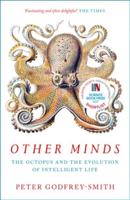Publisher's Synopsis
Neural Plasticity Across the Lifespan reviews the recent scientific developments which are transforming our understanding of the human brain. For many years it was thought that modifications to the structural and functional organization of the brain were limited to a short early period of life, "the critical period", and, in adults, to the memory system. Recent research suggests that on the contrary we should see the human brain as a flexible structure, which adapts and modifies in response to learning, sensory experience, age and disease.
The book provides an integrated overview of contemporary research on neural plasticity - the process by which the brain can change in structure and function to cope with new experiences and react to the effects of acquired damage or sensory deprivation. It reviews data on plasticity in the developing brain, looking at both typical and atypical development, alongside clinical and observational research on the adult population. It covers a number of key topics, including:
- different forms of neural plasticity
- factors affecting neural plasticity (ageing and gender),
- neural plasticity in language acquisition, memory and bodily self-consciousness
- mechanisms of repair - plasticity following sensory deprivation and acquired brain damage.
This is an accessible overview of an emerging field of research which has fundamental implications for how we perceive our potential to change throughout our lives. It will be essential reading for all students of cognitive development, cognitive neuroscience and lifespan development.











